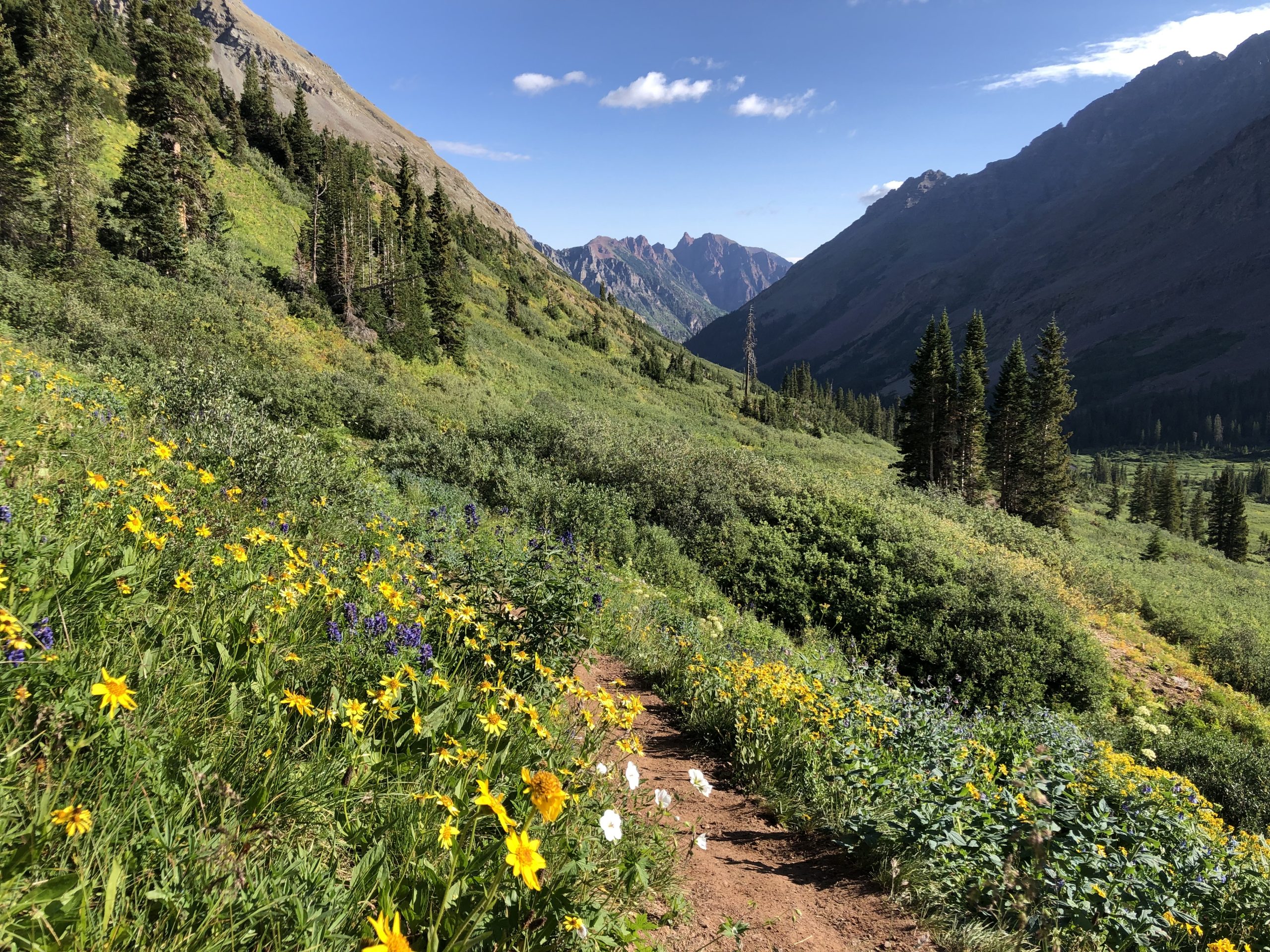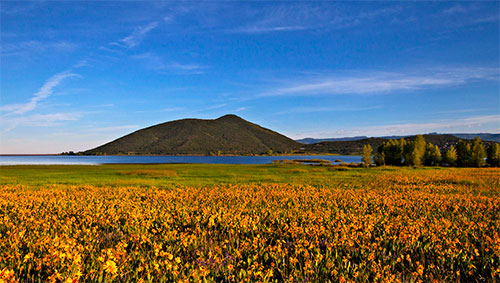9 Tips for Day Hiking in Colorado
Tips for Day Hiking
Need some tips for day hiking in Colorado? Enjoy your day hike to the utmost. No matter your hiking skill level, it’s important to be properly prepared. Here are nine tips to remember as you plan your next outdoor expedition!
- Day Hikes near Denver
- Popular family day hikes
1. Day Hiking: Bring Plenty of Sustenance
Your body will need plenty of energy to complete a day hike in Colorado, so pack enough food for your journey. You’ll want to choose foods based on the length of your hike. You can enjoy a wonderful picnic while on a day hike that includes everyday foods versus backpacking, where most meals are freeze-dried. That said, you still want to bring along foods that won’t spoil in the heat and will pack well. Sandwiches, canned fish, sausage or dried meats, cheese, fruits, crackers, nuts, and other similar types of food are ideal. You still have to carry everything, so heavy items such as a bottle of wine will bear a toll. Consider transferring the wine into a compressible reusable plastic bottle. Plastic cups don’t weigh much but break unless you have a reusable camp cup.
Day Hiking Picnic Packing Tip
Please do NOT feed any animals you may encounter on your hike. You must pack out all of your trash. Having an extra bag with you or a large ziplock food bag that can double as a trash bag is handy. Think about food packaging trash when you’re putting the picnic together, and try eliminating unnecessary waste when packing.
2. Plenty of Snacks
Bring plenty of snacks, such as trail mix, granola bars, jerky, and/or a peanut butter and jelly sandwich (or two). You always want to bring more than you think you will need. Bring many different types of gourmet snacks that can become an ongoing meal throughout the day. With so many beautiful vistas and places to take a break, it’s nice to enjoy those moments with a snack.

3. Bring Plenty of Water
Always bring more water than you think you will need. Water is not what you want to run out of, and bringing some home is OK. At higher elevations, the sun is intense, making you thirsty and hot. Many day packs will have water blatters with a hydration tube for easy water access while hiking. It’s best to drink continuously versus waiting until you feel thirsty. Allowing yourself to become thirsty means you might already be dehydrated. Avoid possible dehydration and the accompanying side effects such as dizziness, stumbling, cramping, and other adverse symptoms.
4. Bring the Right Clothing and Gear
You know what they say: “If you don’t like the weather in Colorado, wait five minutes!” Colorado is notorious for its quickly changing weather, so bringing proper clothing for the hike is important. Layers are recommended to keep you warm, and you can remove layers if you get too hot. Wear synthetic fiber clothing that dries quickly – avoid cotton fabrics that tend to absorb moisture. To be on the safe side, be sure to pack:
- A lightweight rain jacket or windbreaker.
- A visor or a wide-brimmed hat.
- A pair of extra socks.
- Zip-off pants (turn into shorts).
- Sunglasses
- Sunscreen
- A map
- Your phone (don’t rely on it)
5. Comfortable Day Hiking Boots or Sandles
Hiking in Colorado with a high-quality pair of waterproof hiking boots is recommended. Due to Colorado’s varied terrain—with rocky trails and woodland streams—a nice pair of hiking boots has been the recommended standard for many years. However, you might consider a popular and very comfortable alternative: hiking sandals.
Hiking Sandals versus Hiking Boots
Hiking sandals, you might be thinking? Coloradoans don’t invent all kinds of cool stuff just because we’re cooler than everybody else. No, Coloradoans invent cool stuff because they find a need or a way to enhance their favorite outdoor activities. The adoption of hiking sandals is one of those things. What’s even better about hiking sandals is that they double as river, boat, or walking-around-town shoes. This type of sandal has the comfort of the foot in mind. One of the main complaints regarding hiking boots (well, actually, there are several complaints):
Hiking Boot Complaints
- Your toes get beat up, especially while going downhill. They are constantly pushed against the front of the boot.
- Hiking Boots are hot. Having hot feet is not fun and leads to blisters. To the credit of more modern hiking boots, many have much more sophisticated materials designed for ventilation.
- Until you thoroughly break in hiking boots, they can easily create hot spots from rubbing, which can lead to blisters.
- They become wet once you accidentally fall into a creek or walk through a no-way-around marshland. Even the water-resistant types. Now you have hot, sweaty, wet boots, socks, and feet.
- Hiking boots are generally pretty heavy, but once again, modern hiking boots are lightweight, water-resistant, and breathable.
Compared to Hiking Sandals
- A true hiking sandal is designed without a toe loop; instead, straps hold the sandal on. There is no way to rub your toes against the front of the sandal (there is no front).
- Hiking sandals are always breathable and cool.
- They can be worn with socks. Socks that can be easily removed when necessary.
- Hiking sandals break in quickly. The most common complaint is blister soreness on the bottom of the foot, but due to the feet’ natural toughness, that goes away quickly.
- Hiking sandals have no problems with getting wet. They quickly dry and don’t cause blistering due to wetness.
What About Exposed Toes and Pebbles?
Yes, this does raise some issues. Using hiking poles is a good idea, especially for those new to hiking sandals. You have to learn to pick up your feet a bit more carefully, which comes pretty naturally. Using hiking poles is helpful with any varied terrain and will complement your balance and carefulness. The footbed of hiking sandals is cradled, which creates an edge of protection from anything you might bump into, preventing stubbing your toes. The soles of hiking sandals are rugged and wide, designed for grip and stability.
Those pesky small sand pieces that occasionally get into your shoe bed. Well, it happens with hiking boots, too, and you have to take your boot off to get at them.
6. Know Where You’re Going Day Hiking
You’ll want to do plenty of research before you head out for your hike. Ensure you check the elevation gained and what the trail is rated, expert versus beginner. It’s important to pick a trail within your ability level, or you might end up unhappy. Don’t forget that you’re only as strong as your weakest link! Understand the rules of the trail you choose. You may not have cell phone service on the trail, so be sure to let someone behind you know where you’re going and when you plan to return home. This way, if you aren’t back around your estimated time, that person can contact your local mountain rescue on your behalf. If you’re going on a long journey, consider bringing a GPS beacon – this can be a lifesaver if you get lost or need to direct others to your location. When spending time in the wilderness, always be prepared and leave nothing to chance. Here are some top-day hiking recommendations.

7. Use Trekking Poles
Expert hikers and novices alike will benefit from using trekking poles during a hike. Trekking poles provide added stability as you hike, allowing you to maintain your pace even while carrying a heavy pack on your back. By providing an extra point of contact between your body and the ground, trekking poles reduce heavy loads that can put pressure on your knees and ankles. Modern trekking poles also feature collapsible options, allowing you to stow the poles away when not in use easily.

8. Carry Emergency Supplies
Hikers of all skill levels know to prepare for the unexpected. Bring emergency supplies to keep you and your party safe in all circumstances. Pack a complete first aid kit – at a minimum, this should include adhesive bandages, medical tape, and antibiotic cream. Also, pack an emergency shelter, such as an emergency tarp, to protect your group from the elements. Be sure to familiarize yourself with setting up the tent before you head out on your hike so that you can act swiftly in case of an unexpected situation.
9. Day Hiking means Pack Light
Now that you know what to bring on your next hiking trip, it’s important not to overpack. If you pack too much, it will seriously weigh you down as you navigate even simple trails. If you’re heading out on a long, multiple-day trip, try to keep your pack under 30 pounds. Otherwise, even the most experienced hiker can be affected by dragging around excess weight. Keep your pack light, and you’ll be better able to enjoy your experience in beautiful Colorado.
Day Hiking in Colorado: a Doorway to Much More
As you hike in Colorado, there is so much natural beauty to explore, and day hiking is a great way to begin that journey. It’s a wonderful way to share quality time with people who are special to you and a great way to maintain your health. After becoming a day hiking expert, you might find yourself longing for more. At that point you are ready to check out backpacking. If you thought your day hikes were amazing, wait until you go deeper into the wilderness. The pristine beauty is amazing. However, backpacking is a step up in preparedness, learn more here.
Now that you know what to bring or not to bring on your day hiking trip. All that’s left is to pack up, get out, and enjoy the great outdoors!
by Mikkie Mills






